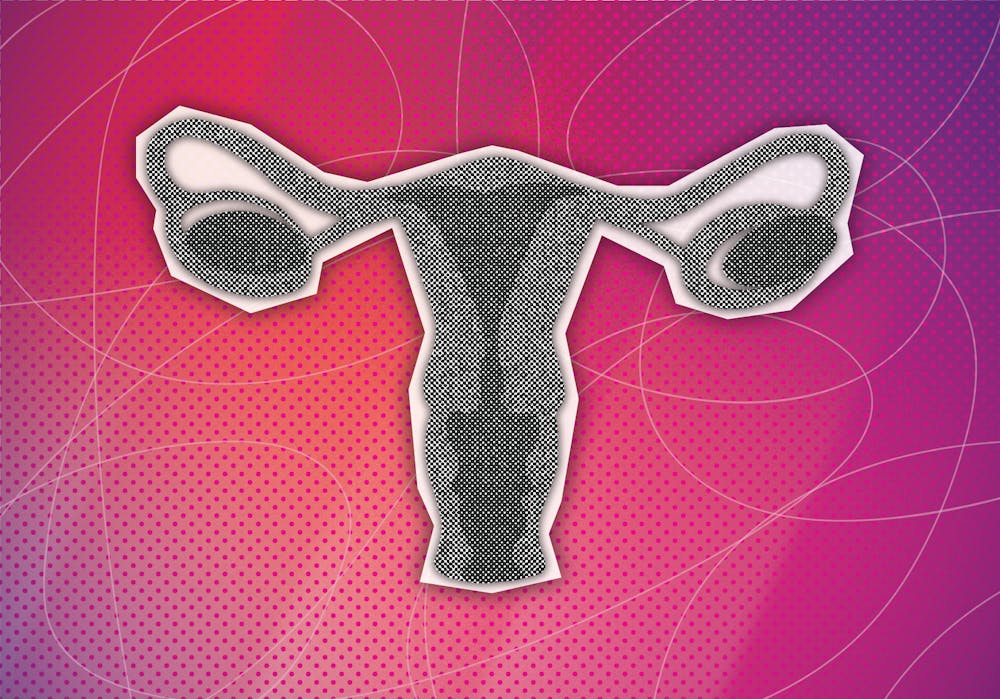As threats to women’s reproductive rights mount across the U.S., some Ohioans are bypassing their legislators and trying a different solution: a citizen ballot initiative.
Protect Choice Ohio is a non-partisan coalition of more than 2,200 doctors, medical professionals, advocacy groups and individuals aiming to get a resolution to protect reproductive rights onto the November 2023 ballot.
Ballot initiatives, protected by the Ohio Constitution, allow citizens to place issues directly before voters on a statewide ballot. To do so, the issue must receive petition signatures from 44 counties.
Susan Shaw, press secretary for Ohio Physicians for Reproductive Rights (OPRR), said the group formed shortly after the Supreme Court’s Dobbs v. Jackson decision in June 2022, which overturned Roe v. Wade. Ohio was a trigger-ban state, meaning the six-week ban went into immediate effect following the ruling.
Shaw said physicians in Ohio saw the impacts of the ban almost immediately. Lauren Bean, a pediatrician and co-founder of OPRR, quickly noticed the broad effects of the ban.
“[Bean] had mothers of children calling her saying, ‘Should I get my kids on contraception? Because what if they’re attacked or they become pregnant?’” Shaw said. “She said, ‘I’ve never had a parent of a 10-year-old ask me that before.’”
As other physicians began to share similar stories, they formed a group and co-wrote a full-page ad that was published in the Columbus Dispatch on July 5, 2022. The letter outlined their opposition to bans on abortion, and more than 1,000 physicians signed it.
Soon after, OPRR founded Protect Choice Ohio, a ballot initiative to get reproductive rights enshrined into the Ohio Constitution.
“What started as a grassroots network has really grown, and now we’re pushing for this ballot initiative,” Shaw said. “It’s not just about abortion; it’s about the full scope of reproductive health care.”
The proposed amendment states that every individual “has the right to make and carry out one’s own reproductive decisions,” including contraception, fertility treatment, miscarriage care and abortion.
Patricia Klingenberg, president of the Butler County Progressive Social Action Committee, is the petition coordinator of the northwest district of Butler County, which includes Oxford. As a retired professor at Miami University, she’s used her network to collect signatures from “low-hanging fruit.”
“We lived through the time when abortion was illegal, and people are really eager to fix this because we know how bad it can get,” Klingenberg said.
Enjoy what you're reading?
Signup for our newsletter
Klingenberg also does outreach to registered Democrats and people whom the group has reason to believe may be pro-choice. She said she doesn’t reach out to students often because most can’t sign the petition if they aren’t registered to vote in Butler County.
While Klingenberg and Shaw both confirmed that the petition efforts are going well, one thing stands in their way: an August special election.
Two bills, Senate Joint Resolution 2 (S.J.Res. 2) and House Joint Resolution 1 (H.J.Res. 1), both recently passed in their respective chambers. The bills would raise the number of signatures needed for the petition from 5% in 44 counties to 5% in 88 counties.
The two resolutions will be voted on by Ohioans in an August special election. The supermajority requirement (60% of the vote), along with the other changes proposed by the resolution, would go into effect if a simple majority of Ohioans voted for it.
Liz Wardle, director of Howe Writing Center and co-president for voter services of the League of Women Voters (LWV) Oxford, said the timing of these resolutions is no coincidence.
“The person who is sponsoring it has said in no uncertain terms that his goal, his urgency, in doing this right now is because people are collecting signatures to get reproductive rights on the ballot in the fall and to fix the unconstitutional gerrymandered maps,” Wardle said.
Wardle said LWV Ohio, in addition to 240 other public interest organizations, is opposed to the bills because it would restrict citizens’ ability to check the power of state politicians.
“It’s one of the things that makes Ohio very special because not every state has this,” Wardle said. “It’s a way to hold our legislators accountable.”
The August special election would cost taxpayers $20 million. Historically, only 8% of eligible voters participate in special elections. Last year, Republican state lawmakers voted to eliminate August special elections due to costs and low turnout, but filed a bill in March to have an August special election this year.
Another initiative voter rights activists have fought for in the past are fair-districting amendments. Ohio’s voting districts have been ruled unconstitutional, and the legislature has been told they need to redraw the maps. However, no effort has been made to do so.
“If we can’t get that fixed, we can’t even vote different people [into office] because we don’t like what the current people are doing,” Wardle said. “If we can’t get these two issues on the ballot in November, I think that our democracy in Ohio will be at major risk because we have no other way to hold them accountable.”
Shaw said that abortion restrictions and gerrymandering stem from the same motive: control.
“It’s about controlling women and controlling their bodies, and it’s about controlling voters,” Shaw said. “Folks who are in power want to stay in power, and they want to continue to execute their control over Ohio citizens even though they’re in the minority.”
However, Shaw remains optimistic that the resolutions won’t pass and that Protect Choice Ohio will gather the necessary signatures to add the amendment proposal to the November ballot.
“Despite all these little speed bumps, the campaign is moving forward, and we’re really confident we can win in November,” Shaw said.
Miami University’s Students for Life and College Republicans did not respond to a request for comment.
To sign the Protect Choice Ohio petition, voters must be registered in Ohio and must sign the petition for the county for which they are registered in. Signing locations and times can be found here.




